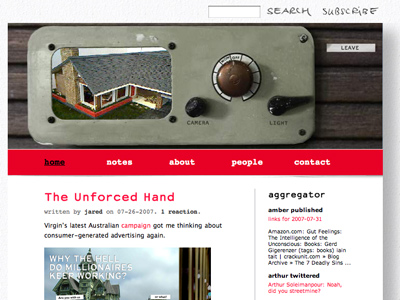
Perhaps the New York Post slightly overstated the importance of the arrival of Naked’s New York office: “When British ad upstart Naked Communications arrived in the U.S. last year, the fanfare surrounding it was an ad business version of the 1960s invasion by The Beatles.The firm vowed to shake up traditional ad agencies and bring a new thinking to Madison Avenue.”
Nonetheless, marketing firm Naked Communications deserves their reputation for innovative work, helping craft their clients’ messages by re-imagining traditional agency models of bland campaigns linked to print or tv media buys. Instead, working with clients such as Johnson and Johnson, Nokia and Reebok, Naked has crafted creative, thoughtful, campaigns that provide real value to consumers and yet still resonate with the client’s brand.
Understandably, Naked wanted a creative and unique approach to their web presence, as founding partner Paul Woolmington notes in describing the New York site: “The modest objective is that we live a naked life like we recommend to our clients, and a side benefit will be that we build a community along the way.” New York partner, Noah Brier, elaborates: “You see, this site is a bit of an experiment in transparency. The aggregator (on the right side of the homepage) is actually pulling in links from across the web (blogs, del.icio.us, twitter and flickr). The basic idea is that the people who work here already do lots of blogging elsewhere. They post pictures and save links on other sites, so why not use that for our own site?”
Uncommon Projects and design firm Fangohr teamed up to create Naked Communications’ online presence for their newly opened New York office. The goal was to turn their entire site into a big, ever-changing blog of their individual partners’ work and ideas. To do this Uncommon engineered an ‘aggregator’–essentially custom-coded server software–to crawl hundreds of streams of employee data and synthesize them into the front and sub pages of the site. Thematically, the London office’s site featured a model British townhouse and Fangohr decided to design an American analog–in this case an actual hand-built Levittown-style model house. Uncommon Projects engineered the house and even added interactive web controls and streaming video for investigative web visitors.